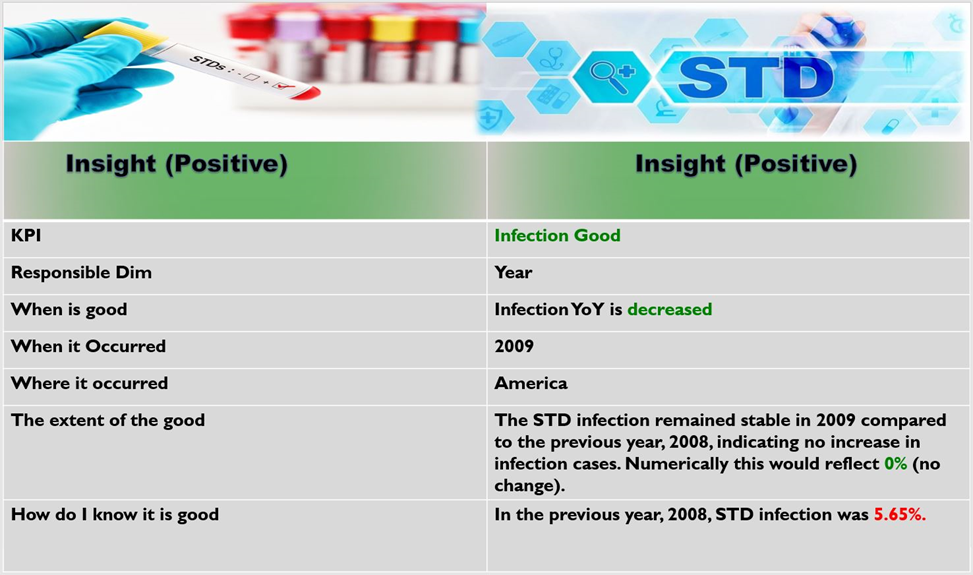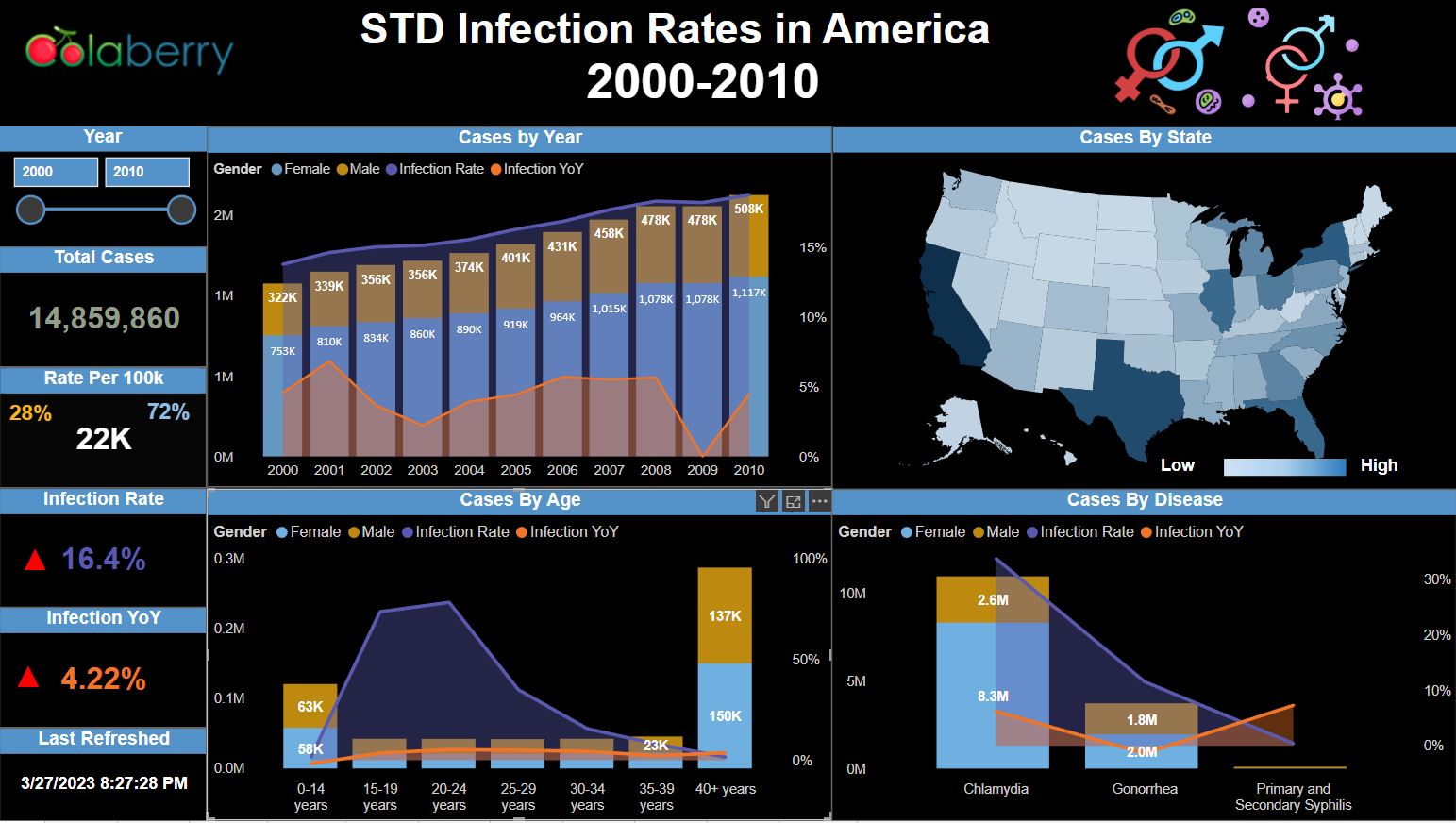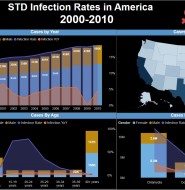Completion Date:
Project Overview
Problem Statement
Despite the availability of effective prevention measures, STDs remain a significant public health problem worldwide. Every year, millions of people are infected with STDs, causing a wide range of health problems, including infertility, cancer, and even death. Some of the challenges that contribute to the persistence of the STD problem include. The Centers for Disease Control and Prevention (CDC) estimates. In the United States alone, more than 110 million people currently have an STD, with 20 million new infections occurring each year. The highest STD rate in Mississippi is1,291.4 per 100
1. Lack of awareness: Many people are unaware of the risks associated with unprotected sex or the importance of getting tested for STDs.
2. Stigma and discrimination: STDs are often associated with negative social and cultural attitudes, which can discourage people from seeking care or disclosing their status to partners.
3. Limited access to testing and treatment: Not all individuals have access to affordable, confidential, and culturally sensitive testing and treatment services, which can lead to delays in diagnosis and treatment.
Role:
Problem Statement
Despite the availability of effective prevention measures, STDs remain a significant public health problem worldwide. Every year, millions of people are infected with STDs, causing a wide range of health problems, including infertility, cancer, and even death. Some of the challenges that contribute to the persistence of the STD problem include. The Centers for Disease Control and Prevention (CDC) estimates. In the United States alone, more than 110 million people currently have an STD, with 20 million new infections occurring each year. The highest STD rate in Mississippi is1,291.4 per 100
1. Lack of awareness: Many people are unaware of the risks associated with unprotected sex or the importance of getting tested for STDs.
2. Stigma and discrimination: STDs are often associated with negative social and cultural attitudes, which can discourage people from seeking care or disclosing their status to partners.
3. Limited access to testing and treatment: Not all individuals have access to affordable, confidential, and culturally sensitive testing and treatment services, which can lead to delays in diagnosis and treatment.
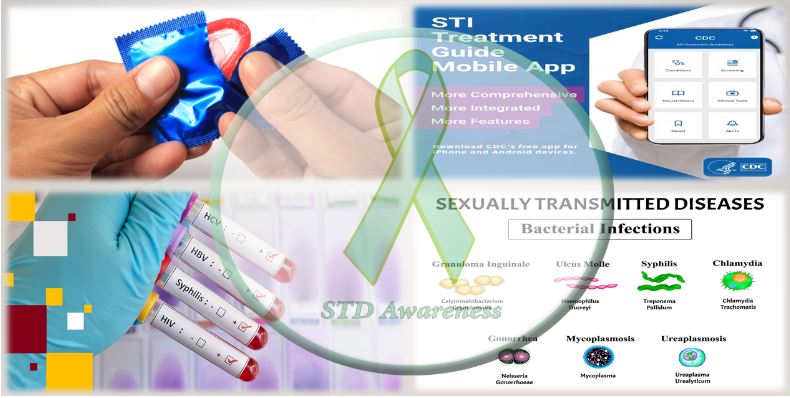
Executive Summary
1. Dataset: Find a dataset with all data that I want to show in my dashboard, So I searched in a lot of sources, and luckily I found the data in Kaggle. A dataset that, although it didn’t have as much information, gave me enough to focus on a certain amount of KPIs. And for analyzing the STD, you need too much information.
2. KPI: The first challenge was finding the right dataset with some KPIs. only had the year, and I realized I couldn’t make a date table based on that. In order to have certain calculations like YoY. I have gone through the different datasets and checked if it’s good for analysis and had the right inputs, and I have checked if the data needs to clean and how much it’s stable for my analysis. To analyze the STD, you need a strong KPI to show the strengths and weaknesses of the participating Disease.
3. DAX calculations: The other challenge was creating the right measure. To produce good calculations and use the right DAX formula. After creating the measure building the dashboard and selecting the right visual was challenging. I found the right Dax calculation. So, when I checked the dataset, the dataset gave the sum of each year. Finally, I solved this situation by measure. Building a waterfall chart was really challenging.

Next Steps
The data shows the STD cases in America. On the data states that there were 14,859,860 million cases from 2000-2010. My suggestion would be:
1. Practice safe sex: By practicing safe sex, individuals can significantly reduce their risk of contracting and transmitting sexually transmitted diseases (STDs). According to the data, the yearly infection rates showed a notable decline of 2.22% from 2001 to compared to 2009. This decline could be attributed to increased condom usage among sexually active individuals. Therefore, consistent use of condoms is strongly recommended as an effective strategy to prevent STD transmission.
2. Get tested regularly: Regular STD testing is essential for sexually active individuals to maintain their sexual health. In 2001, the highest yearly US infection rate was alarmingly high at 14.6%. This underscores the importance of getting tested for STDs, especially for those who are sexually active. Speaking with a healthcare provider is crucial in determining how often one should get tested based on sexual activity and other relevant risk factors. By getting tested regularly, individuals can take proactive measures to safeguard their health and reduce the risk of transmitting STDs to their partners.
3. Communicate with your partner: Effective communication with sexual partners is critical for maintaining sexual health and preventing the transmission of STDs. According to the data, the Rate per 100k cases through 2008 compared to 2009 was 22K, and that number slightly increased to 23K in 2010. Therefore, it is highly recommended that individuals engage in open and honest conversations with their partners about their sexual health history and any concerns they may have. Encouraging partners to get tested regularly and providing support can help reduce the spread of STDs and promote a healthy sexual relationship.
4. Consider vaccination: Vaccination is an effective preventive measure against certain STDs, and it is highly recommended that individuals consider getting vaccinated to reduce the risk of transmission. Although the yearly infection rates showed a slight decrease from 2001 to compared to 2009, the risk of contracting STDs remains a significant concern. Certain STDs, such as HPV and hepatitis B, can be prevented through vaccination. According to the data, Mississippi had a higher yearly rate of infection at 30.6%, compared to states like Maine, which had a lower rate of only 7%. Therefore, it is essential to talk to your healthcare provider about which vaccines may be appropriate for you based on your risk factors and sexual history. By getting vaccinated, individuals can proactively protect their sexual health and reduce the risk of transmission.
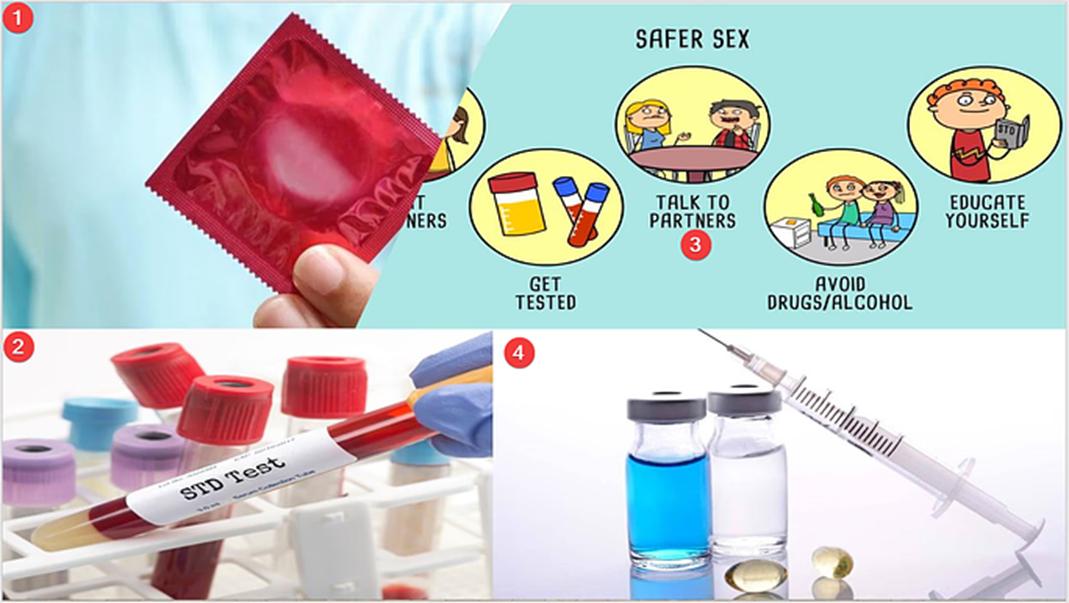
More Projects
STD infection Rates in America from 2000 to 2010
This dataset contains data on the number of STD infection rates in America. The data includes the di... ... More



